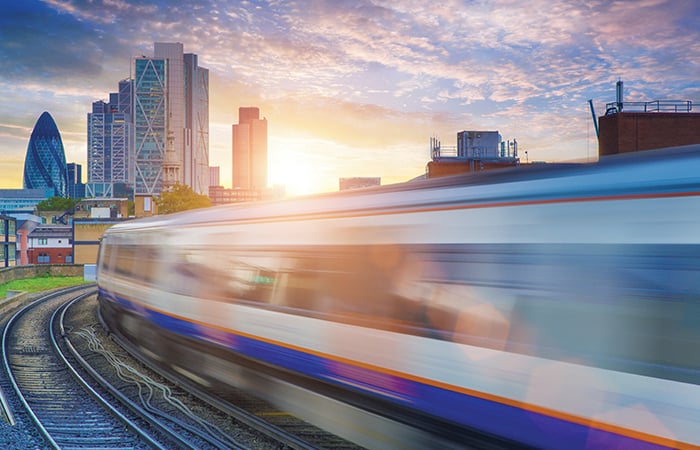Solar rail: Imperial College envisages a future powered by photovoltaic energy
Imperial College researchers and others are envisaging a future of trains powered by photovoltaic energy

Running electric railways directly from sunlight may be a cost-effective way of expanding both photovoltaic energy generation and railway electrification in the UK and around the world, according to a report from Imperial College. Originally triggered by a movement that sprang from an anti-fracking protest, the idea led to a feasibility study and may end up in pilot projects.
The report, Riding Sunbeams, proposes installing photovoltaic panels directly alongside railway lines and transmitting the electricity generated directly into the railway system as traction current, without first distributing it to the grid. This would take advantage of a coincidental match between the peak generating time for solar and a peak demand for traction current, but would bypass current problems in many areas of limited grid capacity. “Many railway lines run through areas with great potential for solar power but where existing electricity networks are hard to access,” explains Prof Tim Green, director of the Energy Futures Lab at Imperial College London. It would also potentially free up many sites for photovoltaic development.
Register now to continue reading
Thanks for visiting The Engineer. You’ve now reached your monthly limit of premium content. Register for free to unlock unlimited access to all of our premium content, as well as the latest technology news, industry opinion and special reports.
Benefits of registering
-
In-depth insights and coverage of key emerging trends
-
Unrestricted access to special reports throughout the year
-
Daily technology news delivered straight to your inbox










UK Enters ‘Golden Age of Nuclear’
The delay (nearly 8 years) in getting approval for the Rolls-Royce SMR is most worrying. Signifies a torpid and expensive system that is quite onerous...